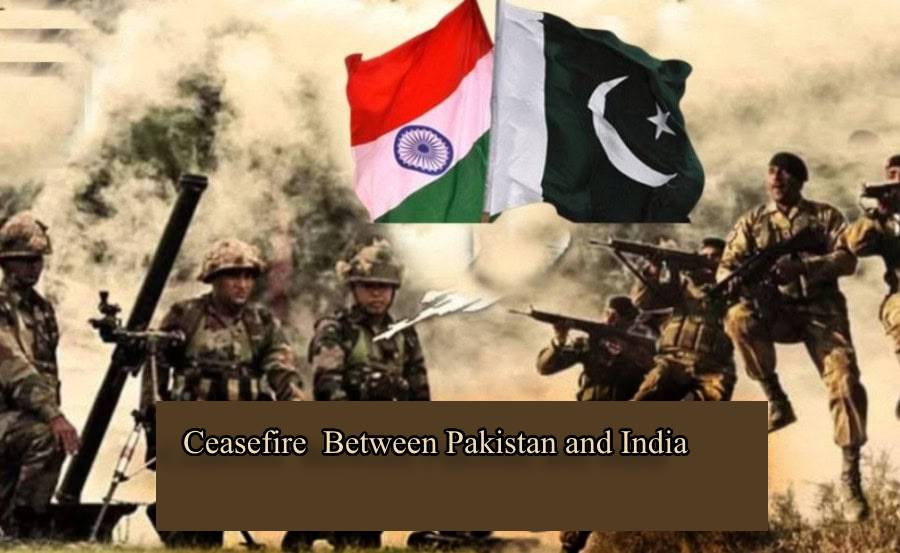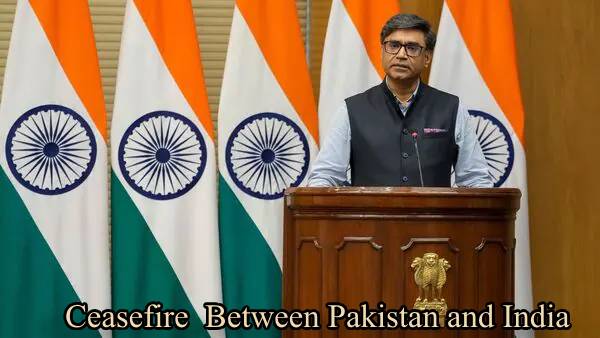The word “ceasefire” carries immense significance when it comes to the relationship between Pakistan and India. Over the decades, both countries have been involved in several military confrontations and cross-border skirmishes, especially across the Line of Control (LoC) in Jammu and Kashmir. Amidst the tensions and complex geopolitical narratives, ceasefires emerge as crucial lifelines for maintaining regional peace, protecting civilian lives, and allowing diplomacy to take center stage.
This article explores the meaning of ceasefire, its importance in the context of Pakistan and India, and a detailed look into the last day of ceasefire activity observed between the two nations.
What Does Ceasefire Mean?
In simple terms, a ceasefire is a temporary halt in military operations between opposing forces. It may be mutual or unilateral, and can be implemented either:
- Formally, through written agreements, or
- Informally, through understanding or declarations
In the case of Pakistan and India, ceasefires are often mutual, but have been broken multiple times in the past due to escalations in border tensions.
Ceasefire in International Relations
In global diplomacy, a ceasefire is often seen as the first step toward long-term peace. It can lead to:
- De-escalation of violence
- Humanitarian access
- Restoration of dialogue
- Potential peace treaties
For India and Pakistan, it serves as a buffer that protects lives, facilitates confidence-building, and ensures the safety of border communities.

History of Ceasefires Between Pakistan and India
The India-Pakistan conflict dates back to 1947 when both nations gained independence. They have fought three major wars and numerous skirmishes. Ceasefires have played a critical role in pausing hostilities temporarily.
Key Ceasefire Events:
- 1949 Karachi Agreement: Marked the first ceasefire supervised by the United Nations Military Observer Group in India and Pakistan (UNMOGIP).
- 1965 and 1971 Wars: Ceasefires were declared after military standoffs with UN and international mediation.
- 2003 Ceasefire Agreement: A significant milestone, it brought years of relative calm until violations escalated again in the 2010s.
- February 25, 2021: A joint statement was issued reaffirming commitment to the 2003 agreement.
The 2021 Ceasefire Agreement – A Turning Point
On February 25, 2021, both nations released a joint statement announcing a ceasefire along the LoC and all other sectors. This step came as a surprise to many analysts due to the prevailing tension post Pulwama attack (2019) and Balakot air strikes.
Objectives of the Agreement:
- Reinforce peace across the LoC
- Reduce civilian casualties
- Resume diplomatic dialogue
- Allow economic and development activities in border villages
Ceasefire’s Impact on Border Communities
The ceasefire dramatically improved quality of life along the LoC. According to reports from 2021 to 2024:
- Civilian deaths decreased significantly
- Cross-border shelling was almost non-existent
- Students and farmers resumed regular activities
- Tourism began to revive in nearby regions
For families living near the LoC, peace isn’t a luxury—it’s a necessity.
Latest Day of Ceasefire: What Happened?
As of the last observed day of the ceasefire, there have been no reported violations from either side. The latest update from military spokespersons on both sides confirmed:
- No cross-border firing incidents
- Ongoing adherence to the 2021 agreement
- Effective military communication mechanisms in place to prevent misunderstandings
The Director Generals of Military Operations (DGMOs) from both nations have continued to maintain hotline contact and share information proactively.
This day was also marked by:
- Humanitarian exchanges, such as repatriation of civilians who crossed borders accidentally
- No infiltration attempts were reported
- Relief work and border development activities continued uninterrupted
These signs reflect a mature and calculated effort by both countries to prevent escalation and focus on internal challenges.

Why Is This Ceasefire Different?
This ceasefire has held longer than many previous ones, especially during volatile times. Analysts believe the changing geopolitical landscape and internal socio-economic priorities have influenced this:
India’s Perspective:
- Focus on economic recovery post-pandemic
- Maintaining peace to encourage tourism and development in Jammu and Kashmir
- Avoiding distractions from China border tensions
Pakistan’s Perspective:
- Dealing with economic constraints and IMF conditions
- Shifting focus to internal political stability
- Reviving foreign relations and seeking investment
International Reactions
The international community, including the United Nations, United States, China, and European Union, have welcomed the ceasefire. It has been cited as:
- A positive example of bilateral diplomacy
- A sign of maturity and mutual understanding
- A confidence-building measure that can lead to future talks on key issues like Kashmir
Challenges Ahead
Despite the success of the ceasefire so far, challenges remain:
- Kashmir Issue: Still unresolved, with deep-rooted sentiments
- Terror Incidents: Non-state actors can derail peace
- Political Rhetoric: Hardline domestic narratives can influence military actions
- Election Cycles: Nationalist agendas may cause friction
Sustaining peace will require consistent diplomatic efforts, backchannel talks, and civil society involvement.
The Road to Peace – A Shared Responsibility
The people of India and Pakistan have often voiced their support for peace. From cultural exchanges to cricket diplomacy, various efforts have shown that human connections outweigh political divisions.
Ceasefires are not just about silencing guns; they are about:
- Rebuilding trust
- Promoting trade and travel
- Supporting regional stability
The last day of ceasefire offers a glimmer of hope, and it is crucial that both governments continue their commitment to peaceful coexistence.
Conclusion
The ceasefire between Pakistan and India, especially its sustained observance up to the latest day, reflects a significant diplomatic success. It has reduced violence, saved lives, and opened the door for future dialogue.
While challenges persist, the commitment to peace shown through this ceasefire can serve as the foundation for long-term regional cooperation. The world watches as two nuclear neighbors choose diplomacy over destruction, dialogue over discord, and hope over hostility





